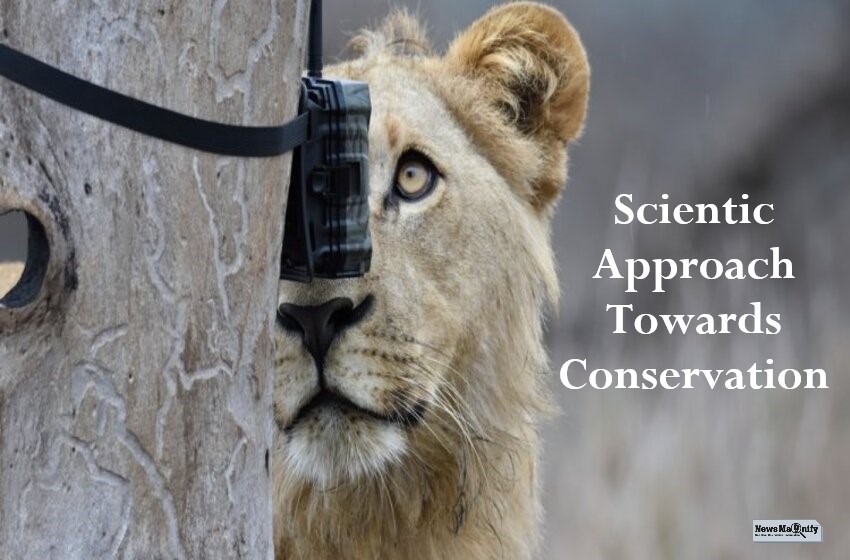
How Are Science Innovations Changing Conservation In The Year 2021?
- Technology New Innovation & Researches
 Sophia Silva
Sophia Silva- August 6, 2021
- 0
- 7 minutes read
In our small existence, humans have developed our journey to an era that many are calling the Anthropocene. This is the latest geological age that is defined by the impact humans have on this Earth. But over creativity is both a ban and a boon on this planet. The contribution of humans to various global challenges that are presently faced by our species cannot be denied. Undoubtedly humans have introduced science innovations changing conservation.
But having said that, at the same time because of our impact the world requires innovation by humans more than ever. It is a known fact that we must stabilize our climate, we require resources to cater to the growing populations, and save the ecosystem that keeps all life. But getting to that lane is not an easy job. In this article, we will see how various science innovations changing conservation.
7 Science Innovations Changing Conservation
Science enables new paths. It connects our lives from the medicine we take to the large network of information that is controlled by one finger. And also science has guided us through everything that we do for more than centuries. Similarly, it has developed innovative conservation ideas. Presently more than 600 conservancy scientists are working around the globe to identify and apply solutions to the biggest challenge that people on Earth are facing. Let us have a look at the various science innovations changing conservation.
Facial Recognition Technology for Fish
How do you recognize the face of a fish? Consider the condition of global fisheries. The primitive business dictum, “If it doesn’t get measured, it doesn’t get managed” applies to fisheries. And within more than 10,000 fisheries across the globe, less than 400 are assessed.
Fish Face utilized facial recognition technology. This is close to the computer application that is capable of identifying a person in a video frame or a digital photograph. This technology is often used for solving crimes. FishFace will use this to get information about that species along with the length measurement of each fish.
Batteries Powered By Blood
There is an ongoing and applied work of the Nature Conservancy’s NatureNet Science Fellow where batteries can be powered with blood or salt in place of Lithium. This program is a partnership among Conservancy and the top research Universities, and “signals to the world that conservation needs to base its work not just in ecology and biology, but in an interdisciplinary approach to science and evidence,” according to Roy Vagelos.
This program is seen as a way to push the conservancy and the world is a necessary and new way to solve the challenges revolving around global sustainability around energy, water, and agriculture.
Camera Traps
Now chasing animals is not a big deal. With these camera traps the activities of critters can be monitored. This is among the latest scientific innovation ideas. This is thought among the great science innovations changing conservation. The activities of the animals are pre-evaluated with these camera traps. They are attached to any tree bark or a sturdy place and in a position that can deliver sufficient images.
Lasers, Drone, and Artificial Intelligence
In the present day, remote sensing which is the art of “observing, identifying, and measuring an object without being in direct contact with it” revolves around a range of tools from high resolution satellite images to lasers that calculate minute alterations in glaciers. Many conservancy scientists are working from the forefront to develop and apply all the tools of remote sensing which include drones.
Bioacoustics
An evolving field of research known as bioacoustics is currently using a complete scope of data which is often known as soundscape, as an approximate measure of biodiversity. Researchers set up sensitive acoustic and ultrasonic recorders in the forest. The acoustic system records sound between 1 and 24 kilohertz, approximately within the normal range of human hearing, which includes vocalizations from frogs, birds, some bats, mammals, and most insects. The ultrasonic recorders capture sound up to 96 kilohertz, which allows the scientists to gather data on insects and bats that vocalize at frequencies out of the range of human hearing.
Precision Agriculture
In many parts of the world, farmers still depend on irrigation to provide water to their crops. This is a very efficient method to grow food in regions that are arid. Water has the chance to get lost in irrigation. Farmers are increasingly inclining towards precision agriculture to reduce cost and inputs and get an effective result. By using a range of technologies like drones, computer applications, and sensors, the right level of input can be determined by the farmers for every square foot of a field.
Soil Ravioli And Bat Saving Bananas
Savvy conservationists are looking to new industry developments, other research fields, and even local home supply stores to evaluate the solutions to the challenges caused by conservation problems.
A common bacterium that has been tested to inhibit fungal growth on bananas of the supermarket was also found to be the first successful treatment for bats that are suffering from the devastating White-Nose Syndrome.
Conclusion
This is perhaps the first time conservation is starting to function at this pace and on the scale that is required to keep up with and even be ahead of our most difficult environmental challenges. There are various science innovations changing conservation from elephants equipped with mobile phones to cameras for trapping the animals, nature is giving us new hope to be at par with time.

